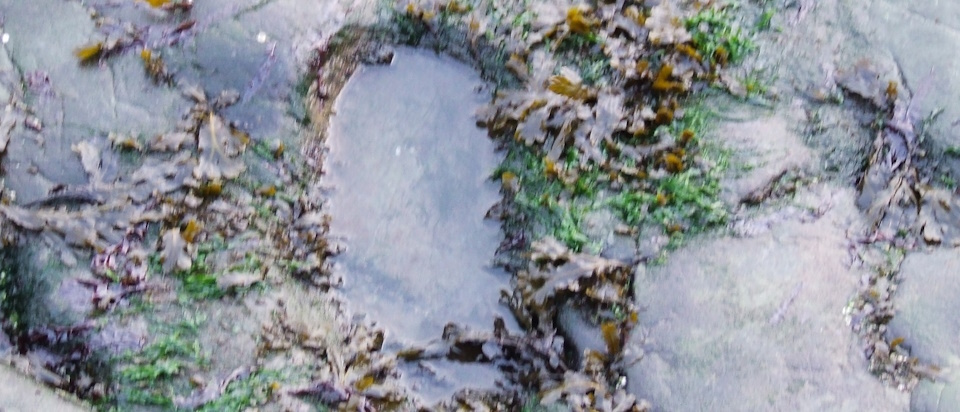17th March - St Patrick’s Day
Written by Anne Newman 2nd March 2020 and updated 2021 & 2024
St. Patrick’s Day is Lá Fhéile Pádraig and is also called Paddy’s Day, which comes from the Irish name Padraig.
However, never, ever call it Patty’s Day. It’ not done!
St. Patrick's Day Parade, Miltown Malbay, c. 2000. Duchas.ie Photographic collection
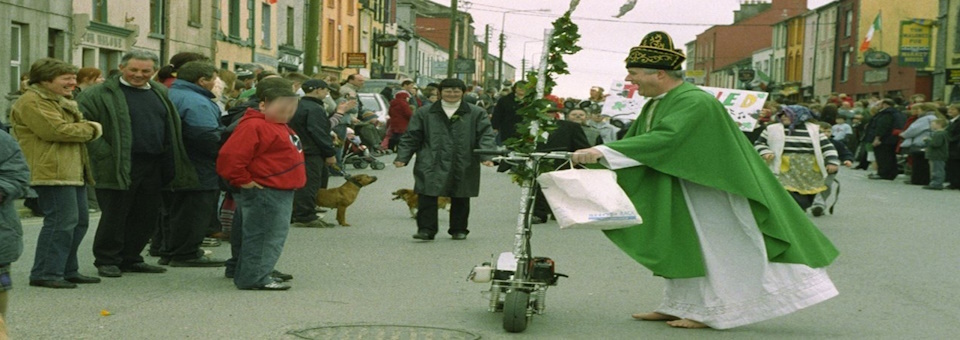
St. Patrick is the patron saint of Ireland. His year of birth is uncertain, with some scholars hitting on 373 while others calculate 390. It is said that he was born in Roman Britain and when he was fourteen or so, he was captured by Irish pirates during a raiding party from the villa of his father, Calpurnius, a deacon and minor local official.
He was taken to Ireland as a slave to herd and tend sheep on Mount Slemish in Co. Antrim.
According to his autobiographical Confessio Patrick's captivity lasted until he was twenty, when he escaped after having a dream from God in which he was told to leave Ireland by going to the coast. There he found some sailors who took him back to Britain and was reunited with his family.
A few years after returning home, Patrick saw a vision he described in his memoir:
I saw a man coming, as it were from Ireland. His name was Victoricus, and he carried many letters, and he gave me one of them. I read the heading: 'The Voice of the Irish.' As I began the letter, I imagined in that moment that I heard the voice of those very people who were near the wood of Foclut, which is beside the western sea-and they cried out, as with one voice:
'We appeal to you, holy servant boy, to come and walk among us.'
The vision prompted his studies for the priesthood. He was ordained by St. Germanus, the Bishop of Auxerre, whom he had studied under for years, and was later ordained a bishop and sent to take the Gospel to Ireland.
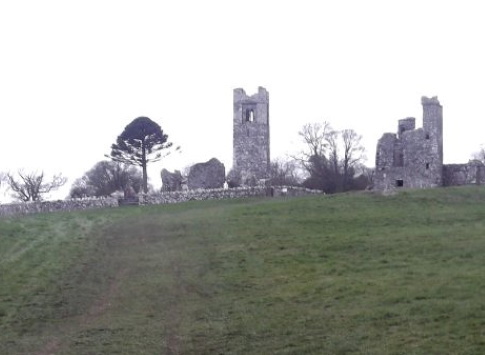
Patrick arrived in Slane, Ireland on 25th March, 433. There are several legends about what happened next, with the most prominent claiming he met the chieftan of one of the druid tribes, who tried to kill him. After an intervention from God, Patrick was able to convert the chieftain and preach the Gospel throughout Ireland. There, he converted many people - eventually thousands - and he began building churches across the country.
Although he is often credited with having brought Christianity to Ireland, he was not the first to have done so as Palladius was preaching to the Irish before Patrick arrived. Patrick preached and converted all of Ireland for 40 years. After years of living in poverty, traveling and enduring much suffering he died 17th March 461 at Saul, where he had built the first Irish church. He is believed to be buried in Down Cathedral, Downpatrick. His grave there was marked in 1990 with a granite stone. Another legend says he is buried in Armagh.
Source of photo's below - Photographic Collection at Duchas.ieSt. Patrick's Well, Finglas.
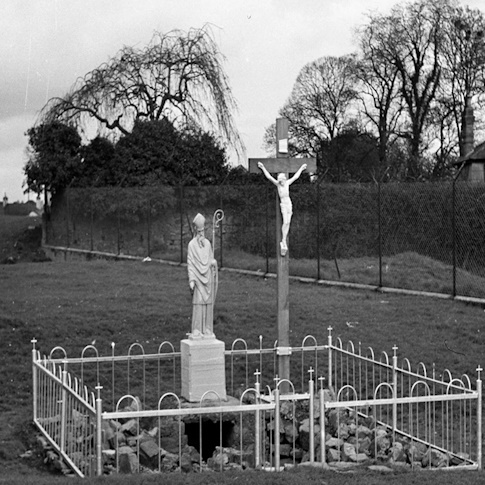 | St. Patrick's Well, Ballyshannon.
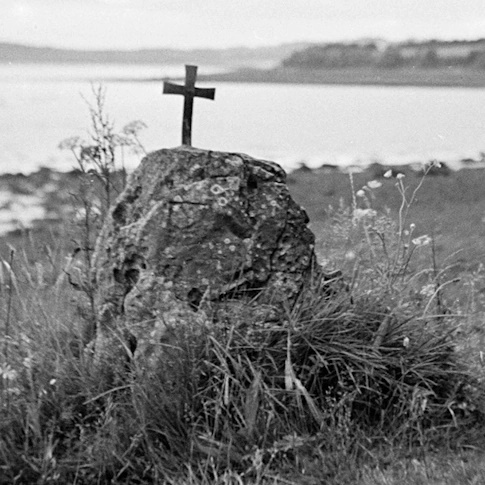 |
Snakes, raising people from the dead and feeding hungry sailors.
One of the most famous is that Patrick drove the snakes of Ireland
into the sea to their destruction. However, there were never any snakes
in Ireland! So does the legend have other meanings? The serpent was the
symbol of the Druids so was it the Druids that St Patrick drove from
Ireland, by threatening them with death if they didn't convert to
christianity?
Patrick wrote that he raised people from the dead, and a 12th-century hagiography places this number at 33 men.
He also reportedly prayed for the provision of food for hungry
sailors traveling by land through a desolate area, and a herd of swine
miraculously appeared.
Not Amused
Once upon a time when Saint Patrick was travelling through Ireland being very tired he lay down to rest on the border between Cork and Kerry. Two working men, one from each county thought they would play a joke on the Saint as he slept. They took of his sandals and put one in each county. When St. Patrick woke he was angry and said that from now on, no Cork or Kerry man would be without a 'brogue' on his foot and a 'brogue' on his tongue. Duchas.ie - the Brogue of Cork and Kerry men
Shamrock
Patrick used the Shamrock to explain the concept of the Holy Trinity, three persons in one God, to an unbeliever by showing him the three-leaved plant with one stalk.
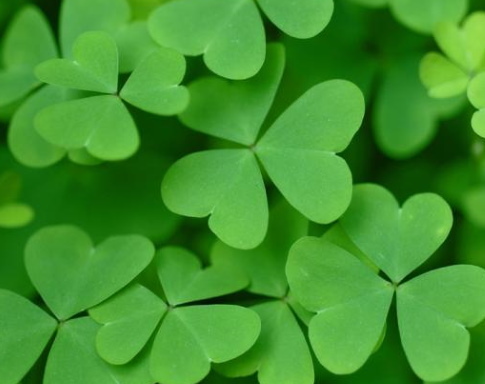 | This led to the tradition that Irishmen have worn shamrocks, in their lapels on St. Patrick’s Day. |

Blackbirds on Croagh Patrick
St Patrick spent the forty days of Lent on Cruach Aigle mountain in County Mayo which is now known As Croagh Patrick.
During these days, he was harassed by demons disguised as blackbirds.
The birds formed such dense clusters that turned the sky black. But
according to this legend, Saint Patrick continued to pray and rang his
bell as a proclamation of his faith.
In answer to his prayers, an angel
appeared and told him that all his petitions on behalf of the Irish
people would be granted and they would retain their Christian faith
until Judgement Day.
Reek Sunday aka Garland Sunday
On the last Sunday in July, pilgrims climb Croagh Patrick, traditionally in their bare feet. The pilgrimage honours St. Patrick who spent forty days
fasting at the summit in 441. Last Sunday in July - Reek Sunday / Domhnach na Cruaiche
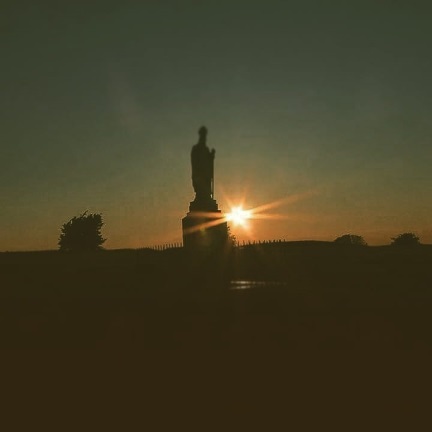
Saint Patrick's Breastplate
Attributed to St Patrick, the poem known as The Deer's Cry or St Patrick's Breastplate, tells the story of how the saint used a power called féth fíada to transform himself and his companion into wild deer so that they could escape ambush while on their way to preach at the Hill of Tara, the ancient capital of Ireland and the sacred place of the Druids.
Awaiting the arrival of Patrick and his companion with the intention of attacking or imprisoning the two Christians, their Celtic adversaries saw only a deer with a fawn roaming across the fields. So the missionaries successfully reached the Hill without incident.
"Christ within me, Christ behind me, Christ before me, Christ beside me, Christ to win me, Christ to comfort and restore me, Christ beneath me, Christ above me, Christ inquired, Christ in danger, Christ in hearts of all that love me, Christ in mouth of friend and stranger."
Patrick’s Day Badges
As well as the custom of wearing shamrock and green ribbons on St. Patrick’s Day there are also another very old custom that used to be common. Traditions from Cill Rialaig, Co Kerry, is that the people would wear a ‘cros cipín dóite’ or ‘cross of charred pin’. The ‘cross’ was made of burnt sally twigs and worn on the right arm.
There also used to be a custom of making Patrick’s Day badges, one type for boys and another for girls. Examples of these can be found in the National Museum of Country Life.
| Fig 1 represents the badge which the Fieldstown girls made to wear on St Patricks day. The big cross was made out of eight little crosses which were made out of tinsel paper or green ribbon. Fig 2 represents the badge which the Tenure girls made for St Patricks day. | 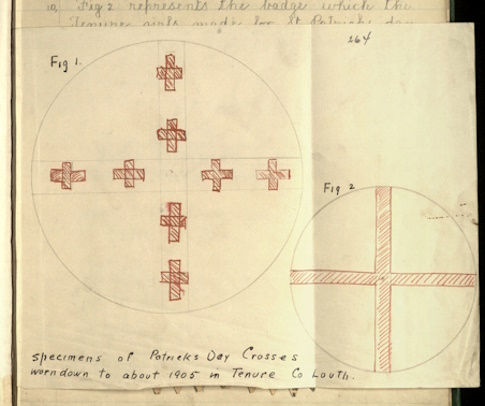 |
Thomas Dinely in 1681 noted the wearing of St Patrick’s day crosses. This is now an extinct tradition and refers to the wearing of homemade badge.
“For a week or so preceding the National Festival, the grown members of the family are occupied in making “St Patrick’s Crosses” for the youngsters, boys and girls; because each sex have a radically different “Cross”. The “St Patrick’s Cross” for boys, consists of a small sheet of white paper, about three inches square, on which is inscribed a circle which is divided by elliptical lines or radii, and the spaces thus formed are filled in with different hues, thus forming a circle of many colored compartments. Another form of St Patrick’s Cross is obtained by drawing a still smaller circle, and then six other circles, which have points in the circumference of this circle, as their centre, and its centre as their circumferential point, are added; after which one large outer encompasses the whole, thus forming a simple and not inartistic attempt at imitating those circles or bosses of our beautiful Celtic cross pattern. The many spaces, concave, convex or otherwise, thus formed are then shaded in; each a different hue and constitutes the “St Patrick’s Cross”…. (Danaher 1972).
”Boys wore their crosses on their caps (Danaher 1972).
For the girls the cross....
“is formed of two pieces of card-board or strong thick paper, about three inches long, which are places at right angles, forming a cross humette. These are wrapped or covered with silk or ribbon of different colors, and a bunch or rosette of green silk in the centre…. The cross was then worn pinned to the chest or shoulder of the girl. "
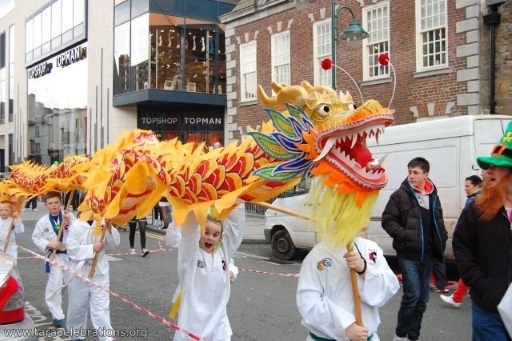
St Patrick's Day Parades
Celebrations have changed significantly over time. A parade was held in Dublin from the 1950s, but it was an industrial pageant. Companies would have a float in the parade and there was a competiton for the best float. Alcohol could not be sold, and St. Patrick’s was a holy day of observation.
New York, Boston, Chicago, Liverpool and London held parades and festivities. St. Patrick’s Day was perhaps more celebrated among Irish emigrants and people of Irish descent than in Ireland itself. Then in 1969,the parade was taken over by Dublin Tourism and it became a general parade with American marching bands, majorettes, and cheerleaders as a central feature.
Then in 1996 the parade was transformed into a large scale carnival event, similar to Mardi Gras and the American St. Patrick’s Day parades. It received Government and State backing and the parade turned into a major tourist event, with Irish arts, music, dance, culture, and food taking centre stage.
Now, 17th March is the focus of a four-day festival, aimed at the international and domestic tourism markets. Irish Government ministers routinely travel to key trading countries to promote Irish enterprise and culture. The Irish Prime Minister annually presents a bowl of Shamrock to the sitting U.S. President on the day.
The religious roots of the day have, to a large extent, become shrouded and forgotten; the festival today is as much associated with emigration, carnival, commercialisation, and other influences, and is celebrated by people of all religions and none.
Imprints of St. Patrick
| Kilmog or Racecourse, Co. Kilkenny | 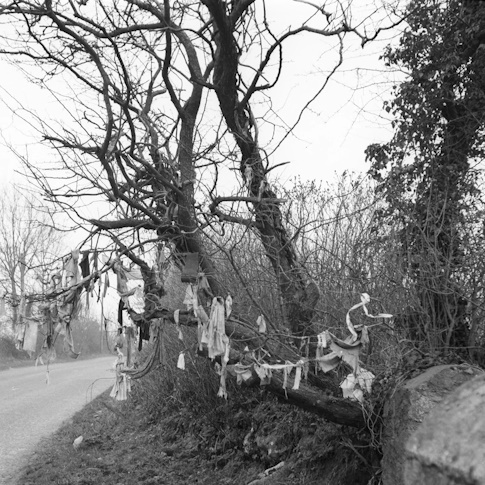 |
Also known as the Raggedy Bush. From the Schools' Folklore Collection:
'On the Kells road there is a bush known as the Rag Bush from the fact that rags are always hung on the bush as the doing of this is supposed to bring luck. This is a Mass bush and under the bush is a flat stone where St Patrick is supposed to have knelt leaving on it the print of his knees and the prints of some of his fingers.' An attempt was made to move the bush but as it was being uprooted a great storm arose that frightened the workmen. They replaced the bush and the storm ceased immediately.
Patrick prayed a lot in Ireland and there are many impressions of his knees in rocks.From Duchas School's Collection - Killina, Co. Monaghan
“Near Mr. Hall's residence, Killacoghil there is a stone in one of his fields with the impression of St Patrick's knee on it.” It is said that when St. Patrick was traveling through Ireland, he knelt, and played so long at it that the impression of his knee was on it. It is called St. Patrick's stone. Everyone goes to see it. I saw it myself.
And his foot occurs in other places - Duchas.ie - St. Patrick's foot impression near Uisneach
Some say St. Patrick and St Brigid are our patron saints. There are a lot of stones near Uisneach and they are called "St Patricks Bed". St Patrick is supposed to have slept there. There is a rock in Killare on the side of the road and it bears the print of a foot. People say this was St Patricks foot.
Go to this excellent website for so much more information - Hugh Fitzgerald Ryan - St. Patrick's Footprint
There is always water in Saint Patrick’s footprint, even at the lowest tide. This enables you to make a wish, but, of course, you must never tell anyone what that wish is. I have made a good many wishes there, since my father first showed it to me a long time ago. I recall him holding my left hand and lowering me down, to dip my fingers in the water and whisper the wish to myself and to Patrick.
